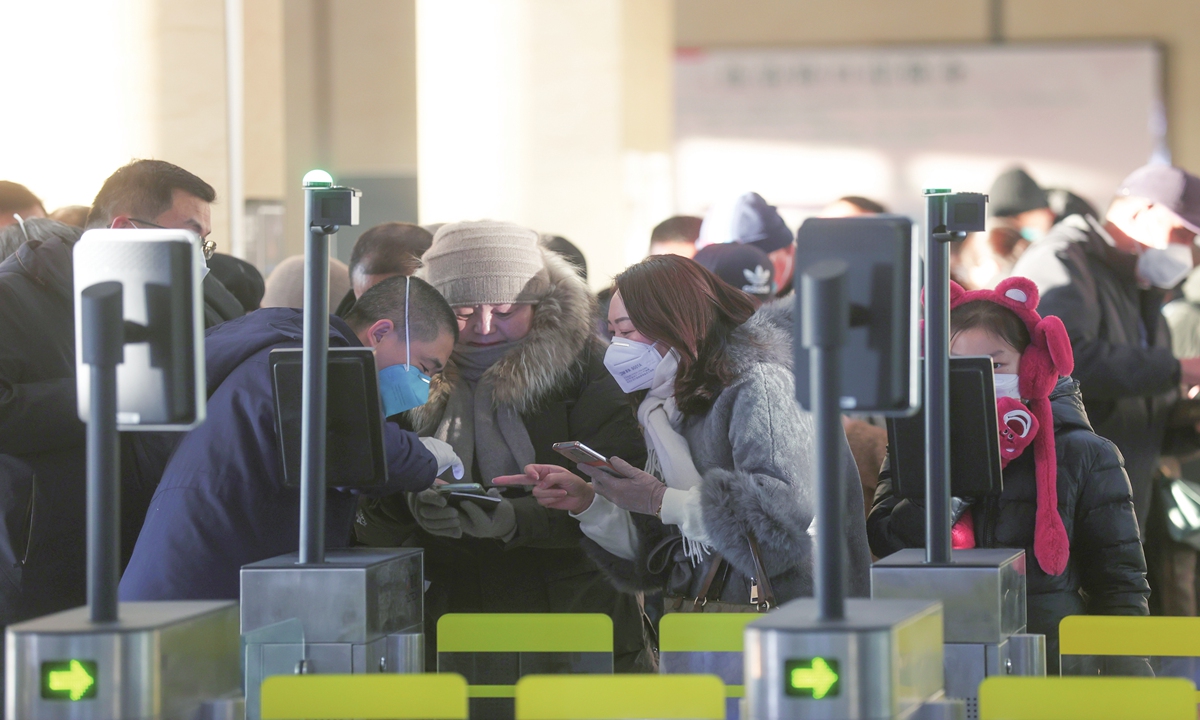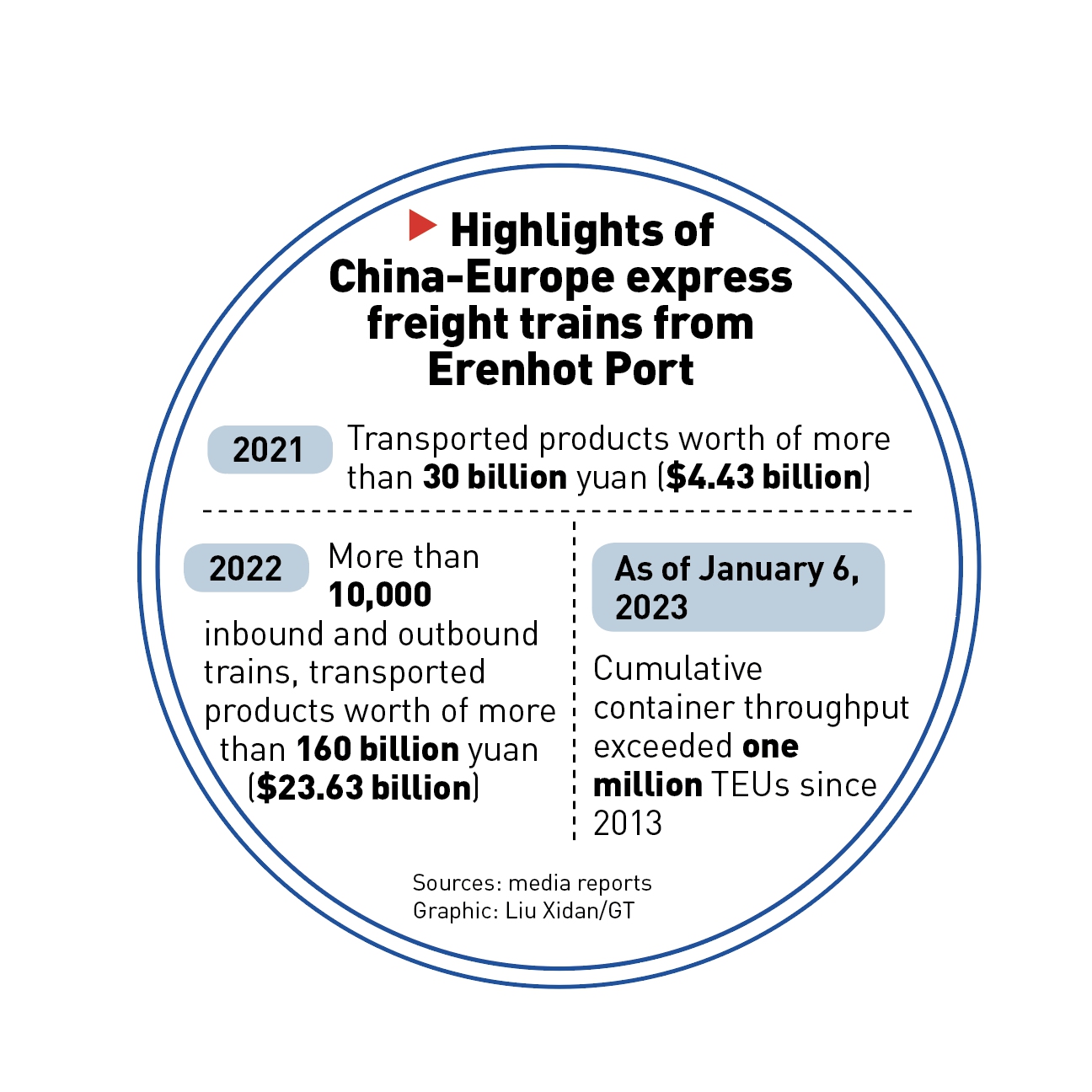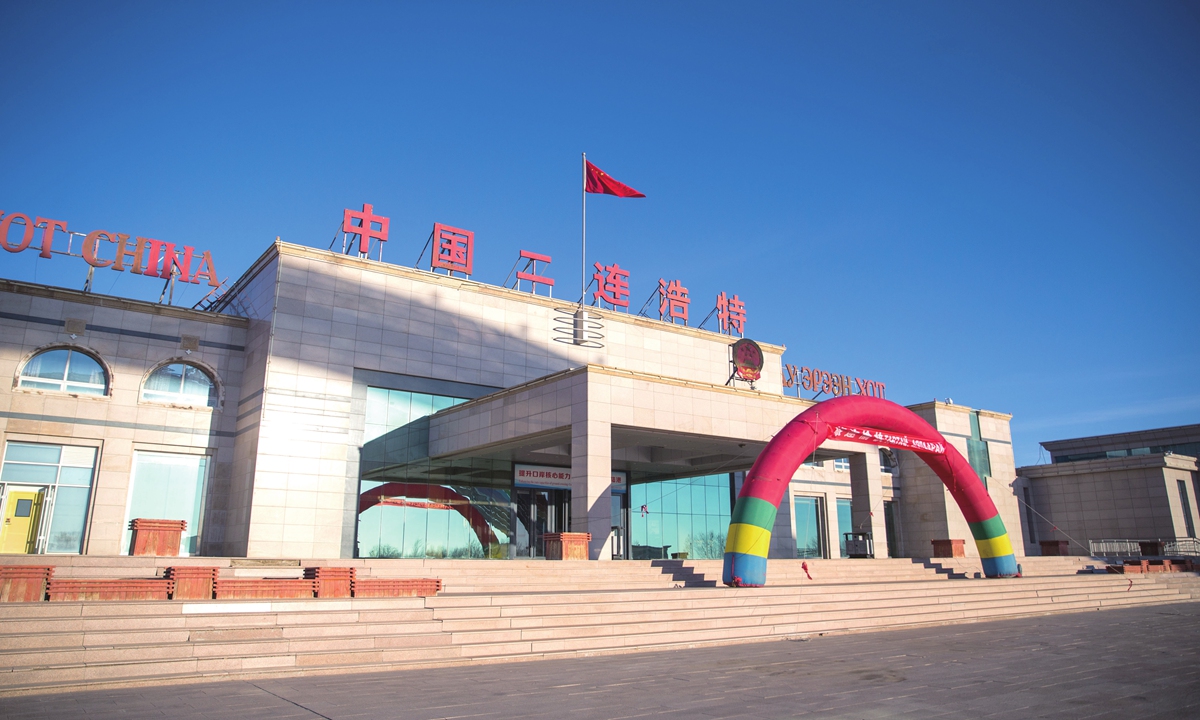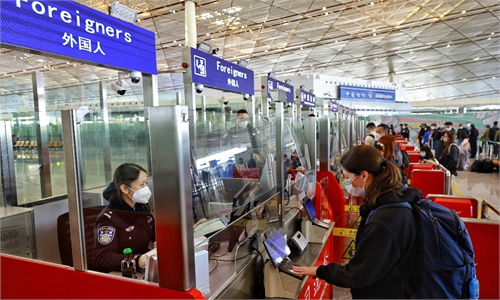After reopening, Erenhot, and other Chinese border cities eye fast economic recovery
Erenhot, other Chinese border cities eye fast economic recovery

Passengers leave China through the Erenhot Port in North China's Inner Mongolia Autonomous Region on January 8 as the border reopened, which marks the first day China downgraded its COVID-19 management from Class A to Class B. Photo: Cui Meng/GT
On a Monday morning in Erenhot, North China's Inner Mongolia Autonomous Region, temperatures are low and the streets are mostly empty. But for Li, a local government official, this winter is relatively warmer and busy scenes will soon return to this small border town. "This winter is warmer in Erenhot than previous years," Li told the Global Times, adding that the spring may come earlier this year.
Sitting on the border between China and Mongolia, Erenhot is home to the biggest port crossing for trade and personnel exchanges between the two countries. Thanks to its booming cross-border trade and tourism with Mongolia, Erenhot is usually full of businessmen from across China and Mongolia. But due to the COVID-19 epidemic as well as the below average temperatures and the upcoming Spring Festival holidays, things are slow at this time of the year.
Spring may come earlier
When Li talked about the warmer winter, he was not just referring to the season, but also the growing expectation that local economic vitality will also recover after the cold winter and the reopening of cross-border travel following China's decision to downgrade its COVID-19 response. And positive signs are emerging.
On Sunday morning, shortly after a nationwide move to downgrade COVID-19 response and lift anti-epidemic restrictions on cross-border travel, the first batch of 300 people from Mongolia arrived in Erenhot. At the Chinese side of the border, many also formed lines for border checks before entering Mongolia.
While the number of travelers is still small, such scenes at the Erenhot port on Sunday were encouraging for many local businesses.
Xiong Jinshun, a businessman from Tangshan in North China's Hebei Province, firstly came to Erenhot in 2018. Impressed by the diversity of local residents and visitors from both China and Mongolia, Xiong later decided to open a hotel not far from the border port in 2021 despite the epidemic.
"It feels exotic, doesn't it? I feel that this is different from many places," Xiong told the Global Times on Monday, noting that after an inspection tour, he feels that "there are more opportunities here" given the city's main economic pillars - cross-border trade and tourism.
However, the epidemic posed difficulties as the number of visitors to Erenhot dropped due to measures to stop the spread of the COVID-19. "Basically, there were no foreign visitors," Xiong said, though some domestic visitors, including medical personnel, stayed at his hotel. However, since November, the situation has improved with the return of some foreign guests. "We have about 40 guests now and this may increase," he said.
Xiong's story is a reflection of the local economy in Erenhot as well as those of many Chinese border ports. While the city faced some challenges during the epidemic, its prospect for economic development remains solid once the main economic pillars return to normal operations.
In the first three quarter of 2022, Erenhot's local GDP dropped 5 percent year-on-year to around 5.2 billion yuan ($770 million), with major declines seen in the industrial and the services sectors, especially the logistics sector, which saw a year-on-year contraction of 55 percent, according to local official data.
Given Erenhot's status as China's biggest port with Mongolia and a crucial point for one of the China-Europe freight train routes, the logistics sector had been booming, with many logistics firms and freight forwarders operating in the city. Like cross-border tourism and trade, the logistics sector had also been affected by the epidemic. But with the resumption of these sectors, many are expecting the local economy to improve, in line with a widely expected national economic recovery.
"It is basically recovering to 2019 pre-pandemic levels in a gradual manner," Liu Yang, general manager of logistics firm Sinotrans' Erenhot branch, told the Global Times, adding that the figures could even be better than that of 2019. "After all, there are many pent-up [demands] over the last three years, and I estimate that there will be a kind of explosive growth."

Efforts to boost economy
To ensure such a growth, many efforts are underway. In November, the local government of Erenhot said that it would "fully promote the resumption of work and production of enterprises, accelerate the construction of key projects, and promote the steady recovery of the economy."
Specifically, the local government vowed to steadily resume trade and logistics by removing limits on certain imported goods. Also to boost consumption, it has issued more than 2.8 million yuan of electronic consumer coupons, driving consumption of more than 12 million yuan, which has effectively stimulated the vitality of the consumer market.
Such efforts have helped improve business sentiment despite the current economic difficulties.
"For our investment in this hotel, I think there is no problem with our choice," Xiong said, noting that businessmen and tourists can now travel freely, which is good for the hotel business. "We are feeling more confident."
Such a sentiment is also seen in many border towns across China from Inner Mongolia to Northwest China's Xinjiang to Southwest China's Yunnan, where local ports have resumed cross-border tourism on Sunday and local governments are taking measures to boost their local economies.
Hekou, Yunnan, which borders Vietnam, on Sunday also welcomed an influx of visitors after anti-epidemic restrictions at border port were lifted.
This year will surely embrace a full recovery in cross-border travel, Yu Yang, Party secretary of Hekou, said in remarks to a Sunday ceremony for the reopening.
Hekou plans to increase bilateral exchanges and cooperation between China and Vietnam, mull over the joint creation of a border travel pilot zone, a cross-border travel cooperation zone, and ramp up the availability of cross-border self-driving tours, among wide-ranging efforts to boost local appeal to tourists, according to Yu.
In addition to the widely expected recovery from the pandemic, local economic development of many Chinese border ports are also likely to gain great policy support including on a national level, as the country has repeatedly vowed to boost development in border towns in a series of documents.
The General Administration of Customs (GAC) last year released a development plan for ports during the 14th Five-Year Plan (2021-25), in which it vows to "accelerate the development of ports in border areas in an all-round way."
The GAC also announced a list of preferential policies to support border ports in areas such as infrastructure building, cross-border trade and cross-border cooperation zones to tackle "bottlenecks and shortcomings that have long restricted the development of China's important border ports."
Due to harsh natural conditions, limited transport connectivity, and other infrastructure shortfalls, the overall development level of China's border areas remains behind that of the modern urban hubs, a problem that policymakers are seeking to rectify. While many border cities still face tough economic difficulties, many signs show that there are reasons for confidence in their long-term development as well as rapid economic recovery this year.
"We all know that the day will come. The earsplitting sound of fireworks across Erenhot on New Year's Eve was a relief for local residents and good wishes for the coming year," said Li, the official in Erenhot.

The Erenhot Port Photo: VCG


